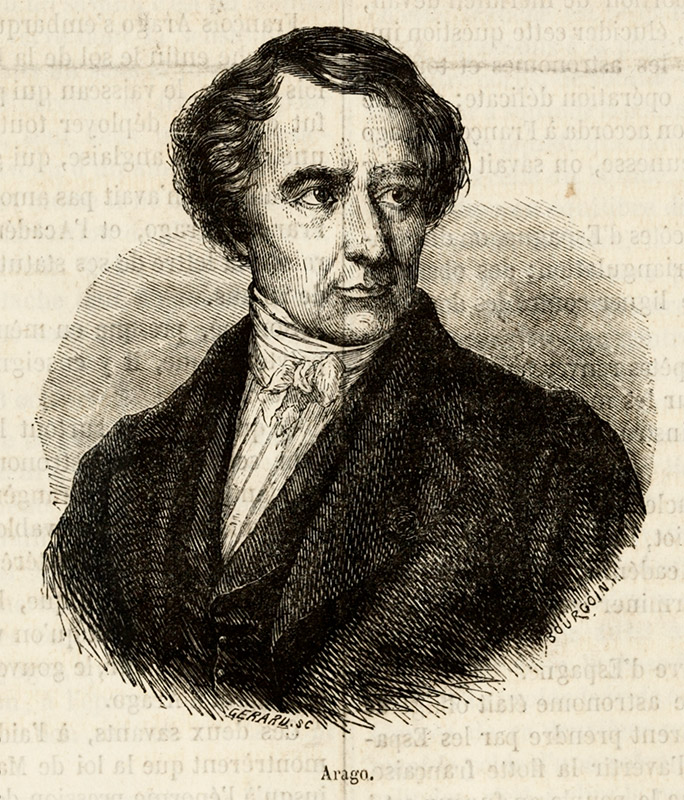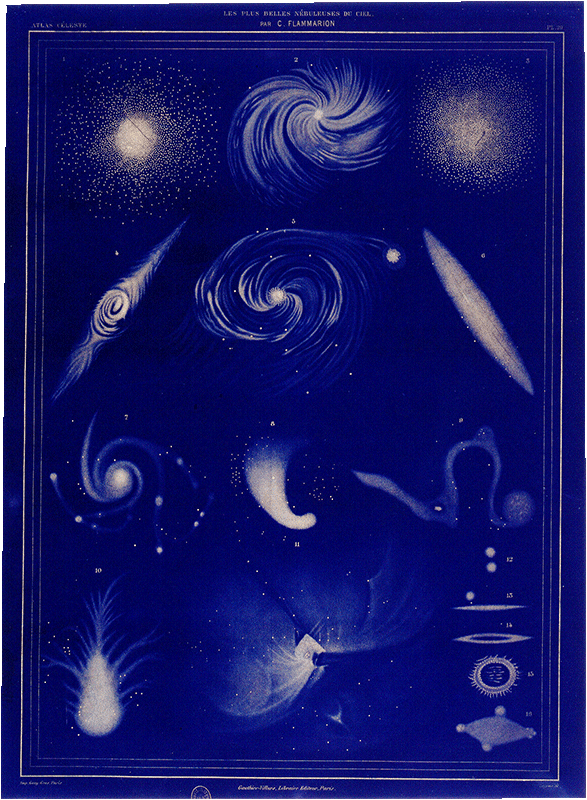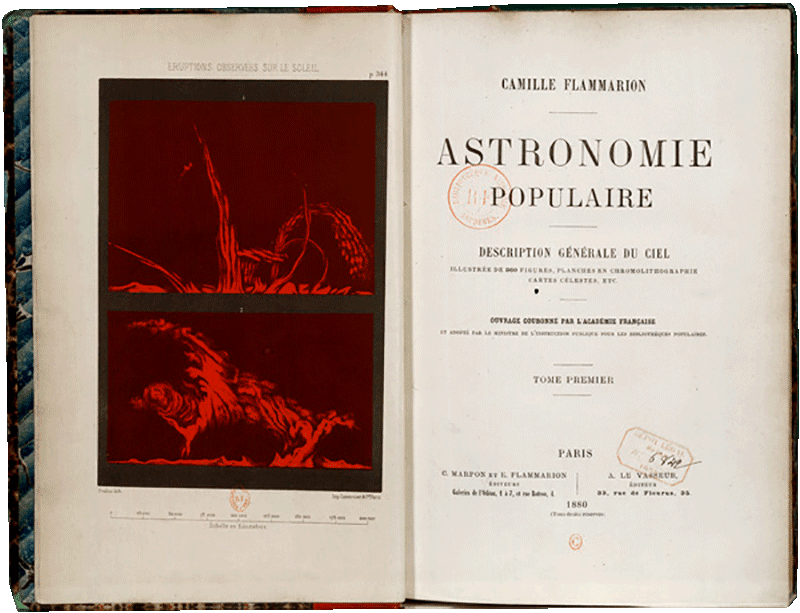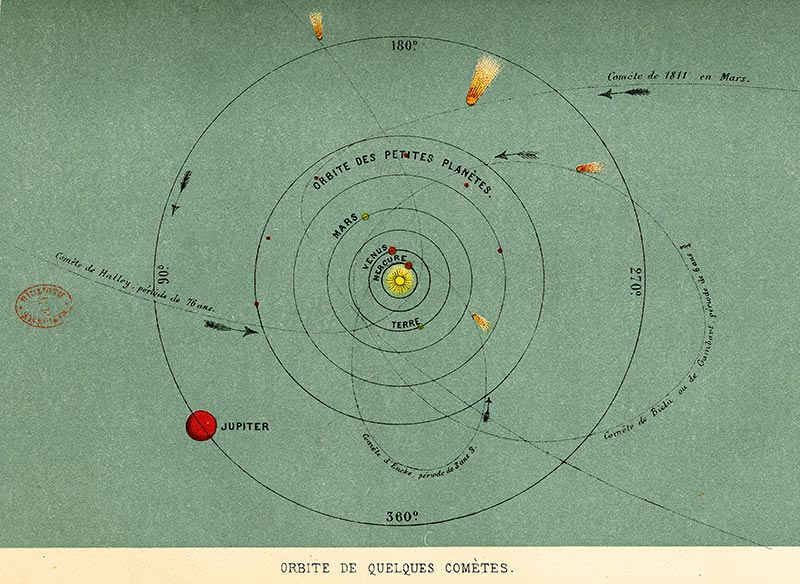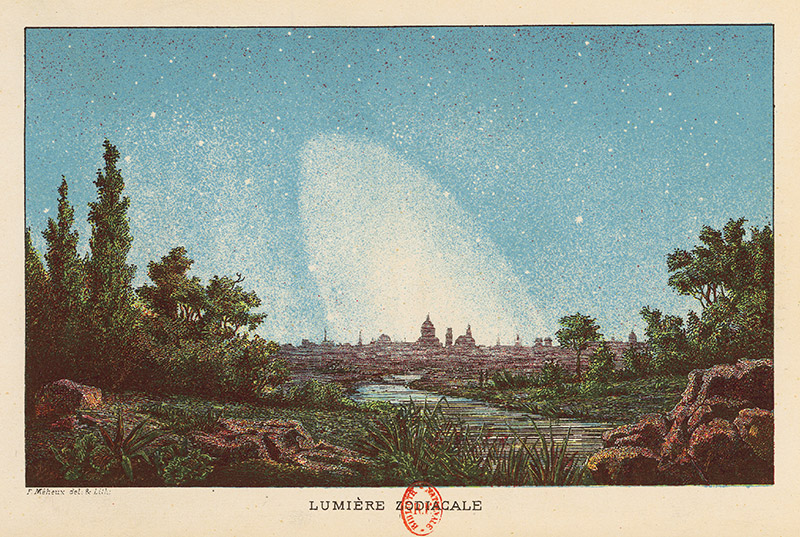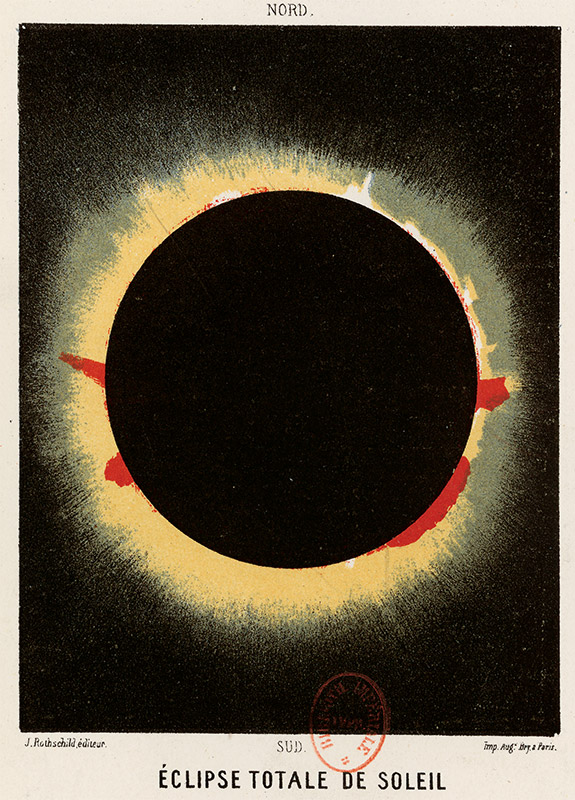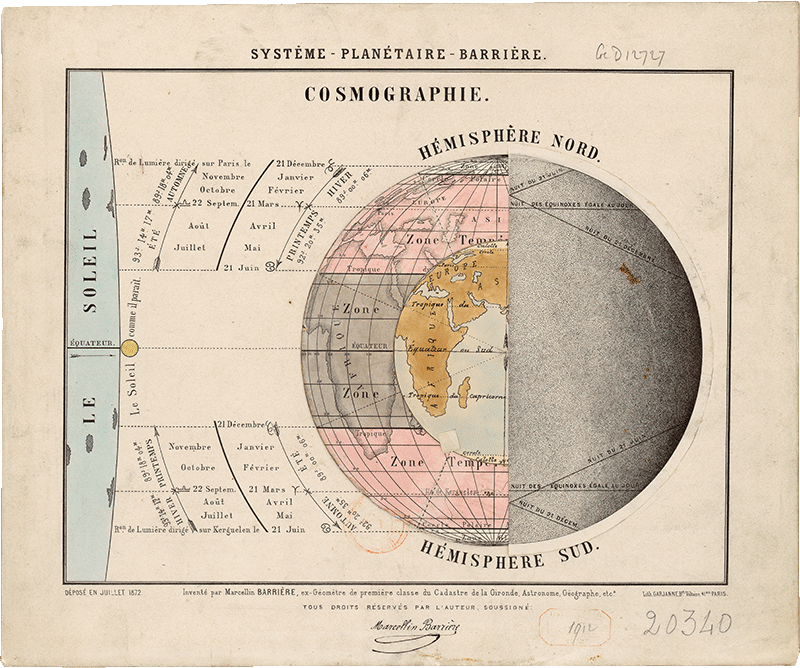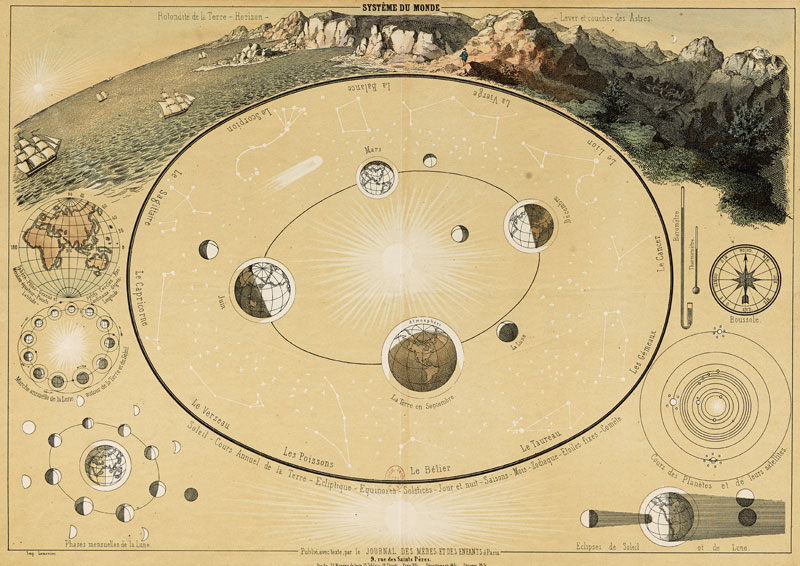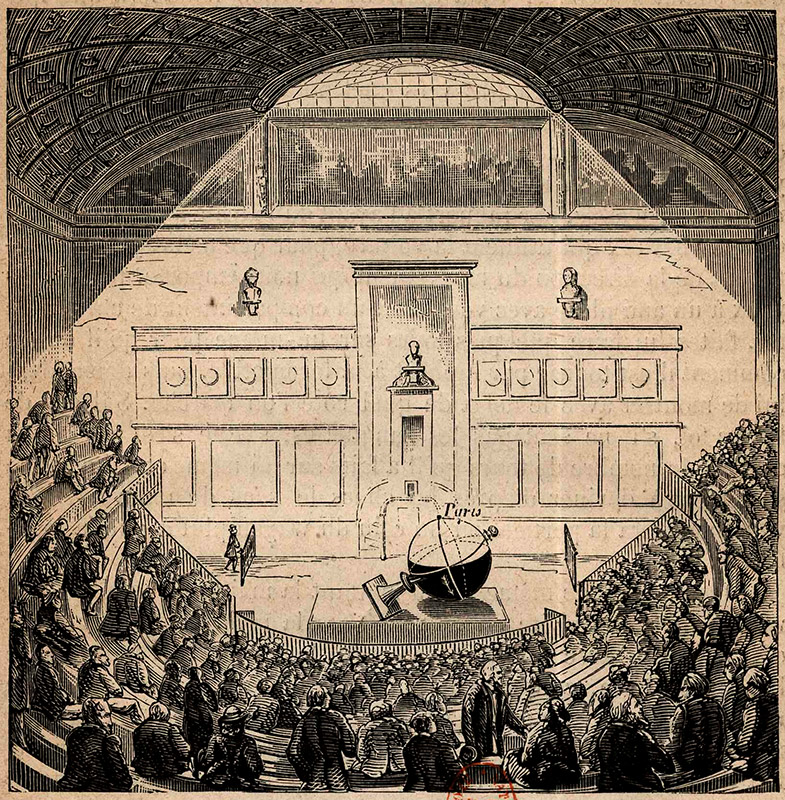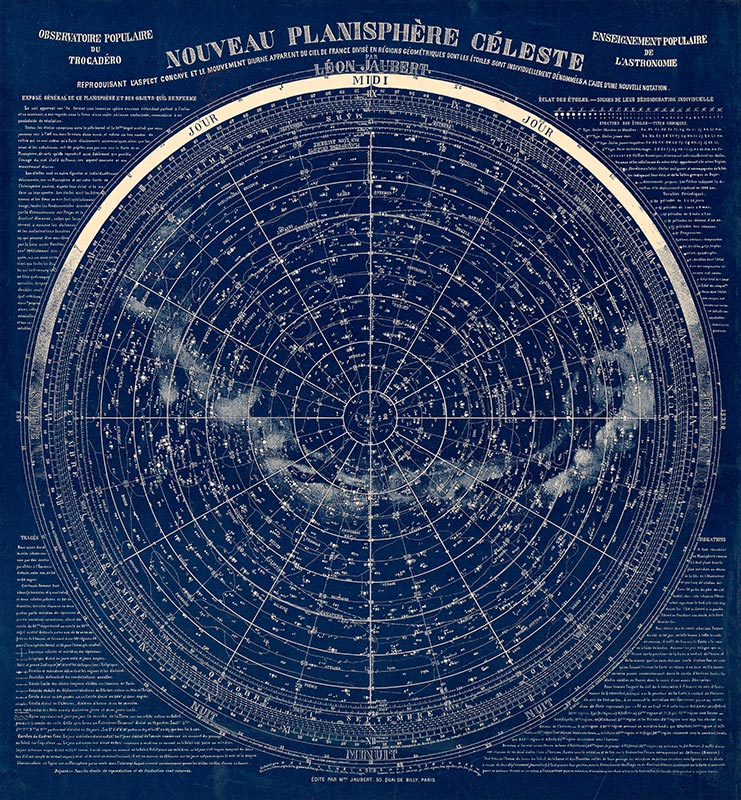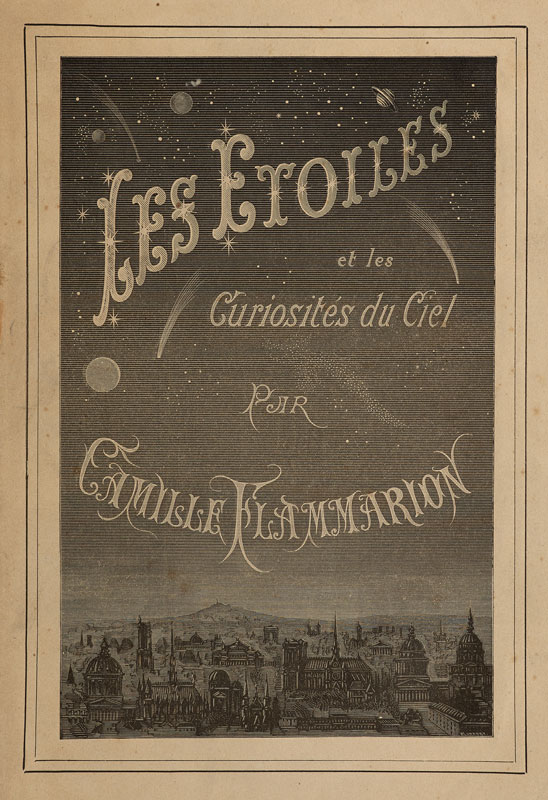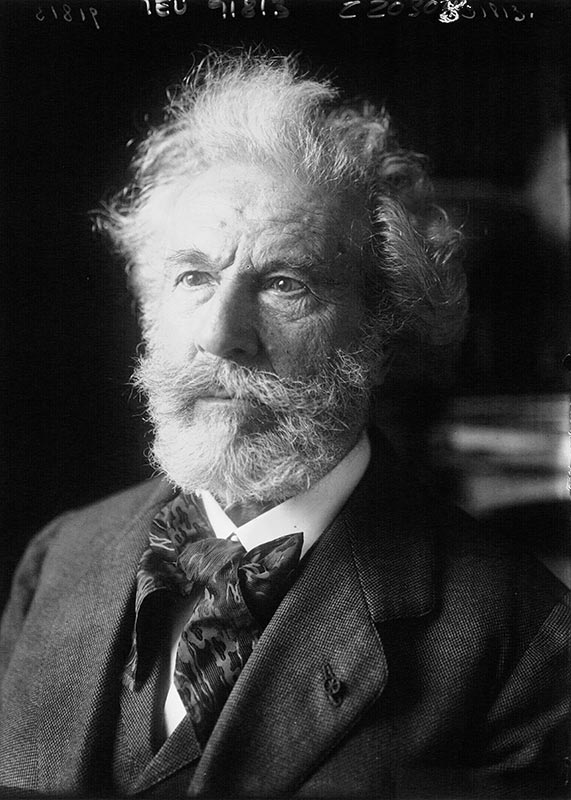In the Stars
“Far from being isolated or inaccessible, Astronomy is the science that touches us most profoundly, and is the most necessary to our general instruction. At the same time, it is the one whose study offers the most charm and keeps in reserve the greatest thrills.”
Flammarion, Camille, Astronomie populaire (Popular Astronomy), 1881, p. 2
La vie sur Mars
By the end of the century, astronomical discoveries and controversies were multiplying. This sparked the general public’s interest and, therefore, demand for “popular astronomy” texts. Authors were already musing about the possibility of life on Mars!
Nevertheless, there was a deep divide between rigorous scientists, like Arago – the director of the Paris Observatory, who cared deeply about showing how serious his methods were – and popularizers like Flammarion, who wanted science to “leave numbers behind and come alive.”
Several comets’ orbits, in Les Merveilles de l’astronomie et de la météorologie (Marvels of Astronomy and Meteorology), Jean Rambosson, 1887.
Zodiacal light, in Histoire des astres : astronomie pour tous (The Story of the Stars: Astronomy for Everyone), Jean Rambosson, 1874.
Popular astronomy managed to reach a very wide audience, with everything from fairly detailed treatises to more light-hearted books.
The Journal du ciel (Sky Journal), which was admired as an excellent introduction to the topic, published observations about the sky that anyone could make over the course of the week.
Instruments (from spyglasses to small telescopes) and teaching materials sometimes came with the magazines, or could be borrowed from libraries.
Astronomy courses were presented to the public before being published in book form: Arago’s Astronomie populaire (Popular Astronomy), for example, is the transcription of the course he taught at the Observatory.
Joseph Vinot’s ambition, as stated in his own poplar-astronomy course, was to present astronomy concepts as simply as possible, so that his lessons
could “be repeated to the whole family [and ] that the mother or father who heard them will have no trouble repeating the lesson to their children.”
Introducing not just astronomy, but more generally “the wonders of the world” to all who wished to learn about them, was also what drove Léon Jaubert, the founder of the Trocadéro Popular Observatory and the Popular Institute for Progress.
They made it easier for the general public to “read” the sky, both by building special arched vaults and by making a large number of telescopes and other scientific instruments available.
